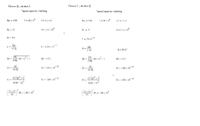marvin1
Newbie level 5

Hello,
I am using SA612 mixer for down conversion, Before the mixer I have image filter that is designed using coupled resonators. In SA612 datasheet the proposed circuit is to match the single input to differential output is a LC balun network, however I do not understand the math behind it. And the circuit in datasheet looks different from typical circuits in Vizmuller book or the one's I googled.
Could anyone explain where 220 pf, 47 pf and 0.2 uH inductor comes from. Thank you in advance.
Oh, here is a datasheet to SA612.
I am using SA612 mixer for down conversion, Before the mixer I have image filter that is designed using coupled resonators. In SA612 datasheet the proposed circuit is to match the single input to differential output is a LC balun network, however I do not understand the math behind it. And the circuit in datasheet looks different from typical circuits in Vizmuller book or the one's I googled.
Could anyone explain where 220 pf, 47 pf and 0.2 uH inductor comes from. Thank you in advance.
Oh, here is a datasheet to SA612.




